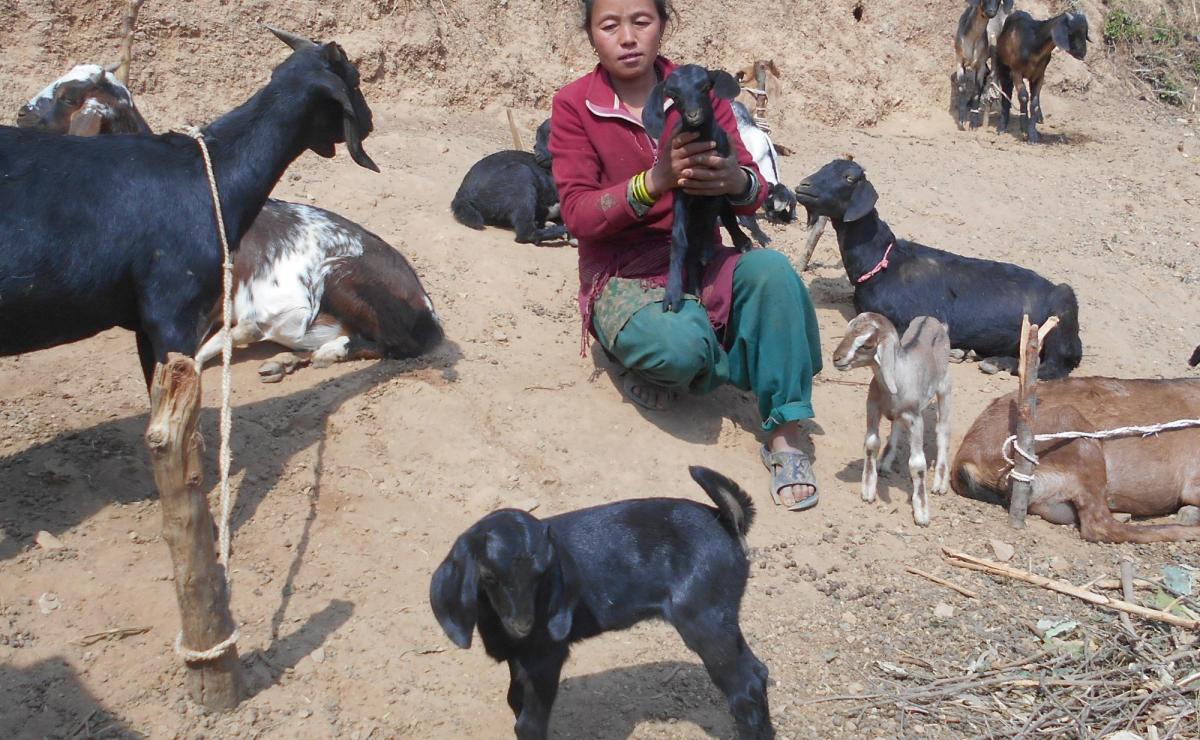Livelihood support elevates Asmita’s economic and social status

Kathmandu, 14 August 2018 - Asmita Nyasur, who belongs to Tamang community, one of the indigenous peoples of Nepal, lives in Bagmati Rural Municipality-3 Shreedanda, Lalitpur. The indigenous peoples commonly known as Aadivasi Janjati in Nepali means a tribe or community having their own mother language and traditional rites and customs, distinct cultural identity, social structure, and written or unwritten history.
The indigenous peoples, in the context of Nepal, are considered as one of the marginalized communities in terms of their overall development. There are 125 castes in Nepal and as per the National Foundation for Development of Indigenous Nationalities Act, 2001, there are 59 indigenous nationalities in Nepal. The indigenous peoples make up for 35.81 percent of the country’s total population, approximately 8.5 million out of 26 million Nepalis.
The Lutheran World Federation (LWF) Nepal priorities the most marginalized and vulnerable groups as its rights holders. In its humanitarian and development interventions, LWF Nepal focuses most on the communities like Dalits, indigenous peoples, people with disability, women-headed households and children.
Dr Prabin Manandhar, Country Director of LWF Nepal, says, “Indigenous peoples constitute the largest percentage of the Nepalese population. We accord high priority to the most marginalized and vulnerable people while implementing programs and responding to emergencies and indigenous peoples are one among them. Out of our rights holders 32% are indigenous peoples and female outnumber male.”
Disaster creates, aggravates and perpetuates poverty. The 38-year-young Asmita who belongs to the indigenous community of Nepal is one of the poor people who was badly affected by the 2015 Nepal Earthquake. Subsistence farming is the main source of her livelihood. The already poor woman faced further trouble when the temblor destroyed her house, killed a buffalo and a few poultry.
She had a difficult time to maintain her 5-member family. The tremor not only destroyed the means of accommodation and livelihood, but also shook her confidence of rearing and educating her 3 daughters. The disaster also destroyed her food stock, thereby triggering food insecurity.
Integrated Community Development Organization (ICDO), an implementing partner of LWF Nepal, provided her Rs 12,000 as livelihood recovery support. She bought 4 goats adding Rs 6,000 herself. Within the span of two years, she has been able to increase the number of goats to 18.
The success in goat raising emboldened her. Then she purchased a buffalo at Rs 100,000. She had received Rs 50,000 in compensation of her buffalo killed in earthquake from a dairy and borrowed Rs 50,000 from Shree Satkanaya Mahila Jagriti Cooperative Limited, a women-led local cooperative at Bhattedanda of Lalitpur district.
Besides the monetary support, she got training in Sustainable Integrated Farming System, home garden management, goat raising, business education and plan including group management from LWF Nepal.

